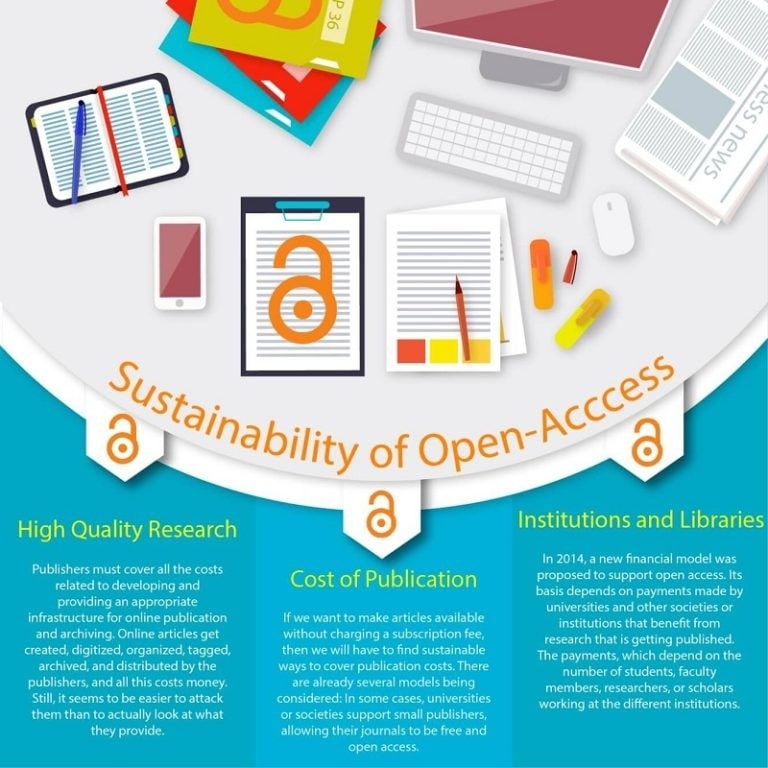The Sustainability Of Open-Access Publications
In a world of information/digital explosion, experts from Tutors India emphasize the importance of financing the open-access type of publishing model—if it has to sustain in the future.
The number of open-access publications has dramatically increased during the last couple of years as a result of the internet and the need to make scientific literature available to all. Many discussions are going on regarding the advantages and obstacles of the open access publishing model. This model enables readers to access scientific papers without paying a fee.
Open access makes scientific research, study and results transparent; open access offers many merits for the academic and scientific research community. However, it is lagging behind and there are obstacles to surmount. These obstacles block the progress and proliferation of open access for all readers. Predatory journals are one reason for the lack of progress as quality issues persist with these types of journals. The other issue is the question of funding (Enago Academy, 2018). Who will fund open access publications? Let’s discuss some important aspects of this model and what needs to be done to sustain it.

Value And Price Of Scientific Publishing
High-quality scientific publishing involves two things: 1) cost of scientific research, and 2) the cost of publishing. All high grade scientific and academic writing comes with a price tag. The publishing phase is another aspect that involves may step such as submitting, peer-reviewing, editing (different levels), LTF (lists, tables, and figures), formatting and more. Promotion and social media marketing also come into the picture. Hence, publishers cannot make quick bucks with low quality work.
Publishers have done an important contribution by providing platforms (development and maintenance) from access perspective to support various research work; take, for instance, research performance tools, mobile applications, article promotions, social marketing, legal help, citations alerts, referencing, text mining, etc.
Today, we have a lot of publications on online databases; hence, publication houses must meet the cost of infrastructure for online publication and archiving processes because online publications get digitized, tagged, and organized. And they are distributed by publishers. Therefore, a financially feasible model is needed to expand access to publicly financed research work.
Financing The Cost Of Publishing
We need to find financially sustainable models to provide articles free of charge; for example, communities and universities engage with small publishers to provide free and open accessibility. Scientific grants permit expenses for Article Processing Costs (APC) in hybrid and open access journals. Publisher sometimes agrees to waive the fee for scientific researchers from developing nations or other countries.
A good alternative is using archives and repositories such as arXiv, Welcome Open Research, etc. Organizations assist both of these alternatives. Pre- or post-print archives and repositories, such as arXiv or Welcome Open Research, are also a good option. Engaging with several organizations avoids risk and the Open Library of Humanities uses this approach which has minimal risk. So the key challenge is finding the right partner.
Collaboration Among Various Bodies
A new model was proposed (in 2014) to assist open access publications; open access depends on the fee paid by universities and other libraries or institutions that profit from published research. These funds go into a single point pool for managing the finances effectively and thereby supporting manuscript writing, development till publication; the number of students, faculty staff, researchers—these are groups that influence payments and the money is deposited into a centrally managed pool which is then utilized for setting up the infrastructure for distribution, accessing, and archiving of manuscripts.
Pay what you can afford (PWYCA) is another way to go about the author-publisher contract (APC); the journal does not charge on a fixed basis but what the author can afford. A good example of an open access journal using this model is the E-cancer Global Foundation.
With the help of a sustainable financing approach, open access publishing certainly will grow leaps and bounds otherwise the growth of this sector will be slow. Discussions among experts are underway to make this a reality and the future of open publishing holds promise.
Need more help, just send in your questions to us.
